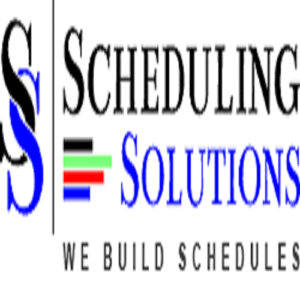
When your project calls for safe, reliable access to elevated areas in tough, uneven, or muddy terrain, few machines are as effective and efficient as rough terrain scissor lifts. Built for demanding outdoor conditions, these lifts offer increased mobility, powerful lifting capabilities, and enhanced safety for construction crews, maintenance teams, and event installers alike.
In this comprehensive guide, we’ll explore what rough terrain scissor lifts are, their benefits, common applications, types, features, and how to choose the right one for your next outdoor job.
What Are Rough Terrain Scissor Lifts?
Rough terrain scissor lifts are specialized aerial work platforms (AWPs) engineered for outdoor use in rugged conditions. Unlike standard electric scissor lifts, these models feature four-wheel drive (4WD), reinforced tires, and higher ground clearance to maneuver over dirt, gravel, and uneven surfaces.
They offer a vertical lifting mechanism that extends a work platform directly upwards, allowing multiple workers and their tools to access hard-to-reach areas safely and efficiently.
Key Features of Rough Terrain Scissor Lifts
Rough terrain scissor lifts come equipped with features that make them ideal for tough job sites, including:
High weight capacity: Often lifting between 1,000 to 2,500 pounds, enough for workers and heavy tools.
Diesel or dual fuel engines: Providing strong power for outdoor performance and long working hours.
Foam-filled or air-filled tires: Designed to handle loose dirt, gravel, mud, or snow.
Outriggers or stabilizers: Ensure safety and stability even on sloped or uneven surfaces.
Large platform sizes: Allow multiple workers to operate at once and transport equipment.
High platform heights: Most models offer working heights between 26 to 53 feet.
Advantages of Using Rough Terrain Scissor Lifts
Investing in or renting a rough terrain scissor lift brings several benefits to the job site:
- Enhanced Safety
With guardrails, emergency lowering systems, and rugged designs, these lifts significantly reduce the risk of falls or tipping, especially when compared to ladders or makeshift platforms. - High Productivity
Multiple workers can operate simultaneously on a large platform, allowing teams to complete tasks faster—ideal for roofing, siding, exterior painting, or window installation. - Versatile Movement
Thanks to 4WD capabilities and large tires, these lifts can traverse challenging landscapes where other lifts might fail. - Stability on Slopes
Many models come equipped with automatic leveling or stabilizing systems, ensuring steady and safe operations on uneven ground. - Long Operating Hours
Diesel or hybrid engines offer more uptime than electric-only models, making them perfect for full-day outdoor projects.
Common Applications for Rough Terrain Scissor Lifts
Rough terrain scissor lifts are indispensable across a wide range of industries and job sites:
Construction
Used to install roofing, siding, HVAC systems, steel framing, or façade panels.
Facility Maintenance
Accessing outdoor lighting, signage, or roof-level mechanical units for cleaning and repairs.
Event Setup
Installing tents, lights, sound systems, and signage for outdoor concerts, festivals, or sports events.
Agriculture and Landscaping
Trimming tall trees, installing irrigation systems, or managing large-scale greenhouses.
Telecommunications & Utilities
Accessing transmission poles, wireless equipment, or elevated control systems on rural terrain.
Types of Rough Terrain Scissor Lifts
- Diesel-Powered Scissor Lifts
Best suited for remote sites with no electrical hookup, diesel models offer raw power and are capable of climbing steep grades. - Dual-Fuel Scissor Lifts
These run on both gas and propane, providing flexibility in fuel choice. Ideal for jobs that may move between indoor and outdoor environments. - Hybrid Rough Terrain Lifts
Combine electric power for indoor use with combustion engines for outdoor terrain. These eco-friendly options are becoming increasingly popular. - Tracked Scissor Lifts
Instead of wheels, these use tracks like a bulldozer. They offer superior stability on soft or muddy ground but are less common and more expensive.
Choosing the Right Rough Terrain Scissor Lift
When selecting a lift for your job site, consider the following criteria:
Platform Height
How high do your workers need to reach? Typical models range from 26 to 53 feet.
Load Capacity
Will your job require transporting heavy tools or materials? Always factor in combined worker and equipment weight.
Terrain Type
Will the surface be dry gravel, loose dirt, or mud? This affects whether you need larger tires, tracks, or stabilizers.
Engine Type
Diesel is powerful for outdoor use, but if noise or emissions are concerns, dual-fuel or hybrid models might be better.
Platform Size
If you need space for multiple people or large tools, choose models with extended platforms or deck extensions.
Rental Tips: Rough Terrain Scissor Lifts
Renting a rough terrain scissor lift can be more cost-effective than purchasing, especially for short-term or seasonal projects. Here are a few rental tips:
Check job site access: Ensure there’s enough room for delivery and movement.
Inspect the lift: Before use, verify brakes, tires, hydraulics, and platform controls.
Ask about maintenance support: Choose rental companies offering 24/7 support and emergency repairs.
Understand safety procedures: Ensure operators are trained and familiar with safety protocols and emergency shutdown features.
Maintenance Tips for Rough Terrain Scissor Lifts
To keep your lift running efficiently and safely:
Conduct daily inspections of tires, hydraulics, and platform controls.
Check fluid levels regularly (fuel, hydraulic oil, engine oil).
Clean the lift after use, especially from mud and debris.
Store properly when not in use, ideally under cover and away from harsh weather.
Schedule regular servicing through qualified technicians.
Safety Considerations
Operating rough terrain scissor lifts comes with responsibilities:
Always wear safety harnesses when required.
Avoid using the lift in high winds or lightning conditions.
Never exceed platform capacity or use unstable ladders on the deck.
Use outriggers and wheel chocks on slopes or inclines.
Train all operators and adhere to OSHA and manufacturer guidelines.
Conclusion
Rough terrain scissor lifts are indispensable tools for outdoor, elevated work. They combine power, safety, and versatility to meet the demands of even the most challenging job sites. Whether you’re in construction, maintenance, agriculture, or events, renting or investing in the right scissor lift can greatly enhance productivity and ensure your team operates at maximum efficiency.
Looking for reliable rough terrain scissor lift rentals? Partner with a trusted local provider to find the right lift, at the right time, with full support and safety assurances.



